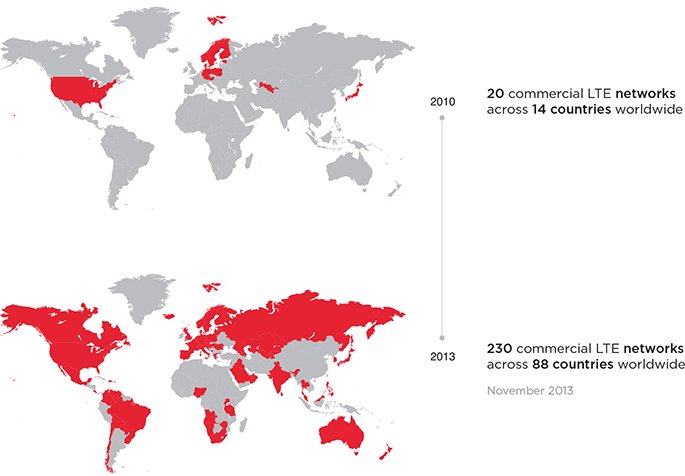
Canada was one of the first countries in the world to offer national LTE networks. After a brief pilot period in 2011, Rogers, Telus and Bell began rolling out LTE in earnest in early 2012, and now their networks reach between 73% and 79% of the population depending on the carrier.
GSMA Intelligence, an offshoot of the GSM Association charged with researching the state of the worldwide mobile industry, has studied the trajectory of LTE networks as of the end of 2013, forecasting how things will look four years from now.

Their research found that the adoption of LTE from 3G has been significantly faster than that of 2G (or 2.5G) to 3G, which happened just five years ago. In 2010, there were only 20 commercial LTE networks across the world; now there are 230, spanning 88 countries, with over 176 million people using the technology across smartphones, tablets and other screens.
LTE users tend to spend more per month — between 10% and 40% more than their 3G counterparts — and consume, on average, 1.5GB of data in the same period. For the carrier, deployment of an LTE network costs less than an equivalent HSPA one, especially if using existing infrastructure like cell towers; LTE networks are more efficient, too, so they need less bandwidth to reach HSPA+ speeds.
LTE networks will continue to proliferate as countries allocate new spectrum for the purpose. In Canada, the 700Mhz spectrum auction is planned for January, and incumbents and new entrants alike are going to be eager to obtain as much of it as possible. Similarly, when the 2500Mhz auction happens in late 2014 or early 2015, carriers will continue to expand LTE service, and are already planning for such a time.
[source]GSMA Intelligence[/source][via]GigaOM[/via]
MobileSyrup may earn a commission from purchases made via our links, which helps fund the journalism we provide free on our website. These links do not influence our editorial content. Support us here.


